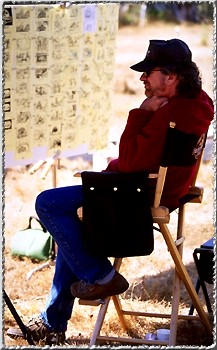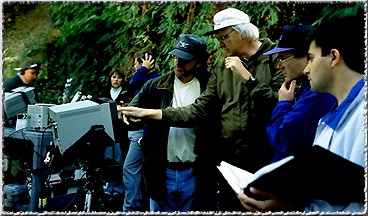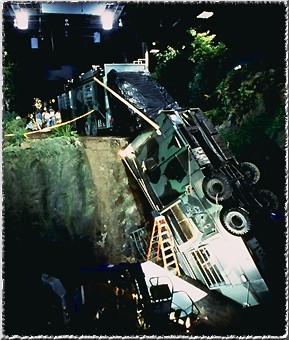Since Jurassic Park´s success (with $916 million total gross worldwide, and the most best-selling video tape), Universal was ready to make a sequel at any time. But it wasn´t possible until Michael Crichton would write the book, because without a good script, there would not be a story to tell. Steven Spielberg and David Koepp, agreed on this.
Director and script writer, joined regularly even before the writing of the book, to share ideas about a possible sequel.

In Spring 1995, Lost World´s preproduction begins. Producers Gerald Molen and Colin Wilson began to make a budget and a programation, at the time Michael Crichton was ending the novel, and Spielberg and Koepp were developing some ideas for the script. Wilson, who was responsible for coordinating visual effects in JP, gathered the same special effects team from JP, with Dennis Muren directing ILM, Stan Winston and Michael Lantieri. Production Designer, Rick Carter, started to work in the Storyboard.
In November 1995, it is official: Steven Spielberg will direct "The Lost World", signing a contract that will give him 17,5 % from box office benefits.
In the first months of 1996, begins the casting of the actors, like Jeff Goldblum´s Malcolm (signed May 23th, one year before the release), or Julianne Moore´s Sarah Harding. Less known actors joins the cast, as Vince Vaughn (August 13th), Pete Postlethwaite (August 16th) and Vanessa Lee Chester.
It´s official that John Williams will compose the Soundtrack, as he did with the first part. The release date in USA is May 20th.
During June 1996, ILM began to work in the Special FX for this sequel visiting the same Zoo that in the first part. They will use a new software developed by Japanese programmers, that is said that can produce sounds of creatures just with its skeleton. Spielberg was so impressed, that it is thought he has used it for some dinosaurs.
In June too, construction coordinator, John Villarino, started his work in Universal Stage 12, the second largest in the world, work that in the future would fill 6 of the greatest Universal stages. Mainly he was guided from ilustrations and models from the Art Department. When he had finished his work, about 120 employees had constructed 80 of the 100 sets, needing more space than Hollywood could give. Because of this, the team couldn´t shoot 2 days in the same stage, as the stages had to be changed up to three times (Stage 12). One of this large sets (the workers village in Site B), has been respeted to join the Universal Studios theme park. Among these sets, it took a month to build a scene with a hanging bus in which they had to shoot several nights.

The shooting began on September 5th,1996 in the spectacular Fern Canyon, and finished on 11th December, six days ahead of schedule and under budget.
The team shot about two weeks in Northern California, on state Parks and private lands. Whithin a week of footage, Spielberg was already ahead of schedule.
In November 96, due to familiar matters, Spielberg left the direction for a week to script writer David Koepp. When he came back, followed the shootin of a bus accident in Burbank, California (see photo).

Molen´s principal aim was to keep the production under budget and going. The budget was a bit higher than the first part ($58 million), but now special effects are cheaper, and you can make more things with the same money.
The script has been cowritten by Michael Crichton and David Koepp. The film is produced by Kathleen Kennedy, Steven Spielberg, Bonnie Curtis, Gerald R. Mollen and Colin Wilson. Companys in the project are Universal Pictures, Constant C Productions and Amblin Entertainment , as in the first part
The night of December 11th the shooting finished, and since then, started to produce rumors about the movie, scenes, characters, argument... but for that is the news section